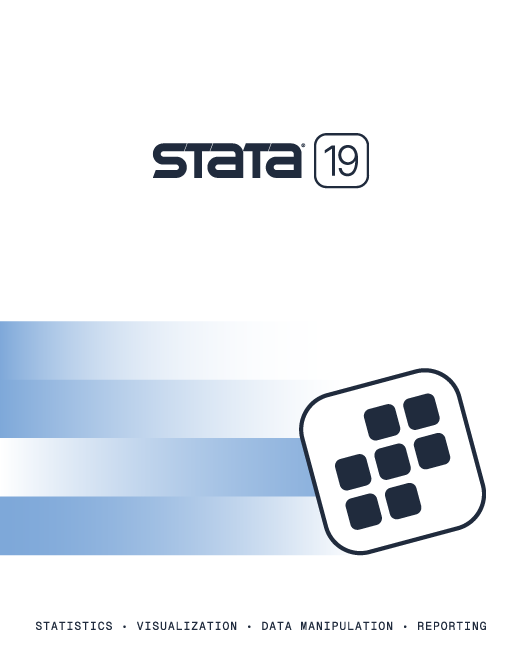Order
Choice models
Model your discrete-choice data—say, a choice to travel by bus,
train, car, or airplane—with a conditional logit, multinomial
probit, or mixed logit model. Is your outcome instead a ranking
of preferred travel methods? Fit a rank-ordered probit or
rank-ordered logit model. Regardless of the model fit, you can
use margins to easily interpret the results. Estimate how much
wait times at the airport affect the probability of traveling by
air or even by train.
Learn about choice models.
Discrete-choice data
- Alternative-specific and case-specific covariates
- Balanced and unbalanced choice sets
- One selected outcome per case or ranked outcomes
Conditional logit models 
- McFadden's choice model
- Odds ratios and relative-risk ratios
- Robust, cluster–robust, bootstrap, and jackknife standard errors
Mixed logit models 
- Also known as
- Mixed multinomial logit models
- Mixed discrete choice models
- Discrete choice models with random coefficients
- Random-effect and random-coefficient distributions
- Normal
- Correlated normal
- Lognormal
- Truncated normal
- Uniform
- Triangular
- Cross-sectional or panel data


- Odds ratios and relative-risk ratios
- Relaxes IIA assumption
- Robust, cluster–robust, bootstrap, and jackknife standard errors
- Survey data support
Multinomial probit models 
- Homo- or heteroskedastic variances
- Various correlation structures, including user-specified
- Relaxes IIA assumption
- Probabilities based on GHK simulator
- Robust, cluster–robust, bootstrap, and jackknife standard errors
Nested logit models 
- Random-utilities maximization model
- Full maximum-likelihood estimation
- Up to eight nested levels
- Facilities to set up the data and display the tree structure

- Predictions for utility functions, probabilities, conditional probabilities, and inclusive values

- Robust, cluster–robust, bootstrap, and jackknife standard errors
- Linear constraints, including constraints on inclusive-value parameters
Summarize choice data 
- Tabulate choice sets
- Summarize covariates by alternative
- Tabulate covariates by chosen alternative
- Report potential problems in data
Rank-ordered probit models 
- Plackett–Luce model, exploded logit, choice-based conjoint analysis
- Homo- or heteroskedastic variances
- Various correlation structures, including user-specified
- Relaxes IIA assumption
- Probabilities based on GHK simulator
- Robust, cluster–robust, bootstrap, and jackknife standard errors
Rank-ordered logit models 
- Also known as
- Plackett–Luce model
- Exploded logit
- Choice-based conjoint analysis
- Complete rankings of ordered outcome
- Incomplete rankings of ordered outcome
- Account for ties (
indifference
)
- Prediction of probability that alternatives are ranked first
- Robust, cluster–robust, bootstrap, and jackknife standard errors
Truly interpret results 
- Estimate
- Expected probabilities of selecting each alternative
- In the population
- In a subpopulation
- At specified covariate levels
- Difference in probabilities of selecting an alternative
- As a covariate changes for this alternative
- As a covariate changes for another alternative
- As a covariate changes for all alternatives
- Marginal effects
- Tests and confidence intervals for everything
Additional resources
See tests, predictions, and effects.
See New in Stata 19 to learn about what was added in Stata 19.
